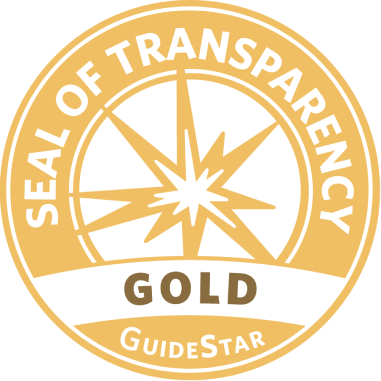War leaves an indelible mark on the human psyche, particularly for women who endure its ravages in unique and often overlooked ways. In regions like Iran and Afghanistan, where conflict and instability have persisted for decades, women carry not just the physical burdens of survival but also the emotional scars of violence, displacement, and systemic oppression. Through their resilience and courage, these women provide a profound lens into the human cost of war and the power of healing.
This article explores the emotional scars of war through the voices of women survivors, shedding light on their struggles, triumphs, and the support systems that have enabled their recovery.
The Unseen Wounds of War
When we think of war, we often picture physical destruction—bombed-out buildings, crumbled infrastructure, and displaced populations. Yet the emotional toll, particularly on women, is just as devastating. Women in conflict zones experience a range of traumas, from the loss of loved ones to sexual violence and forced displacement.
The Dual Burden of War
In patriarchal societies like those of Iran and Afghanistan, women often face a dual burden. Alongside the general chaos of war, they bear the weight of cultural expectations, often acting as caregivers and protectors in the absence of male family members. These roles compound their emotional strain, leaving little room to process their own trauma.
A Hidden Epidemic: Sexual Violence
Sexual violence is a grim reality in many conflict zones. For women, the physical violation is only the beginning. The shame, stigma, and social isolation that often follow create lasting emotional scars, making recovery an uphill battle.
Stories of Resilience
The stories of women survivors are a testament to human resilience. While each narrative is unique, they share common threads of pain, endurance, and the pursuit of healing.
Fatemeh: Finding Voice Through Education
Fatemeh, a young woman from Afghanistan, lost her family during a Taliban raid. Forced to flee to Iran, she lived in a refugee camp where her sense of identity and hope diminished daily.
“I didn’t see a future,” Fatemeh recalls. “I was just surviving, not living.”
Her turning point came when she joined a trauma management program supported by Omid Foundation. Through therapy sessions and vocational training, Fatemeh found her voice. Today, she is an advocate for refugee women, empowering others to break the cycle of trauma through education.
Maryam: Rebuilding After Abuse
Maryam, an Iranian woman, endured years of domestic violence exacerbated by the economic hardships of sanctions and war. For her, leaving was never an option—until she encountered Omid’s support network.
“They gave me a safe space to speak, to feel heard,” Maryam says.
Through counseling and life skills training, Maryam rebuilt her confidence. She now works as a social worker, helping other survivors reclaim their lives.
The Ripple Effects of Trauma
Trauma does not end with the individual—it ripples through families and communities, perpetuating cycles of instability.
Impact on Children
Women who carry unresolved trauma often struggle to provide emotional support to their children. This intergenerational transmission of trauma creates a fragile foundation for future generations.
Economic Disparities
Emotional scars often hinder women’s ability to work or pursue education, trapping them in cycles of poverty. Without intervention, these barriers become insurmountable, leaving entire communities economically and socially stagnant.
The Role of Support Systems
Healing from trauma requires a multi-faceted approach, one that addresses not only the psychological wounds but also the societal structures that perpetuate them.
Therapy and Safe Spaces
Organizations like Omid Foundation prioritize creating safe spaces for women to share their stories without fear of judgment. Trauma therapy tailored to cultural contexts helps women process their pain and regain a sense of agency.
Vocational Training and Education
Economic empowerment is crucial for recovery. Omid Foundation’s programs in vocational training and education provide women with the skills to achieve financial independence, breaking cycles of dependency and abuse.
Community Building
Support networks are essential for long-term healing. Peer-led groups and community programs foster solidarity among survivors, helping them rebuild trust and create new, supportive relationships.
Challenges to Recovery
Despite these efforts, significant challenges remain in addressing the emotional scars of war.
Stigma Around Mental Health
In many cultures, mental health is stigmatized, particularly for women. Seeking therapy is often viewed as a sign of weakness, discouraging many from accessing the help they need.
Limited Resources
Conflict zones often lack the infrastructure to support mental health services. With few trained professionals and limited funding, the demand for psychological support far exceeds the supply.
Ongoing Instability
Healing is nearly impossible in environments of ongoing conflict. Women in Afghanistan, for example, continue to face threats from extremist groups, making long-term recovery a distant dream for many.
The Path to Healing
To address the emotional scars of war, a concerted effort is needed from governments, NGOs, and international organizations.
Raising Awareness
Public awareness campaigns can challenge cultural stigmas and encourage communities to support survivors of trauma.
Investing in Mental Health
Increased funding for mental health programs in conflict zones is essential. This includes training local professionals and expanding access to therapy.
Empowering Women
Empowering women through education, legal reforms, and economic opportunities is key to breaking cycles of trauma and oppression.
Promoting Peacebuilding Efforts
Ultimately, lasting healing requires peace. Governments and international organizations must prioritize conflict resolution and the creation of stable, inclusive societies.
A Beacon of Hope: Omid Foundation
The work of Omid Foundation exemplifies how targeted interventions can transform lives. By focusing on marginalized women and girls, the foundation addresses the root causes of trauma while fostering resilience and self-sufficiency.
Through its trauma therapy, education programs, and vocational training initiatives, Omid not only helps individual survivors but also strengthens entire communities. The ripple effects of their work can be seen in the thousands of women who have gone on to lead independent, empowered lives.
Conclusion
The emotional scars of war are deep and enduring, particularly for women who bear the brunt of its physical and psychological toll. Yet, as the stories of survivors like Fatemeh and Maryam demonstrate, healing is possible with the right support systems.
Organizations like Omid Foundation play a crucial role in this process, offering hope and empowerment to those most affected. By addressing trauma at its roots and fostering resilience, they not only change lives but also contribute to the broader goal of peace and stability.
In a world still scarred by conflict, these efforts remind us that healing is a collective responsibility. By supporting survivors and advocating for systemic change, we can help turn emotional scars into stories of resilience and hope.

